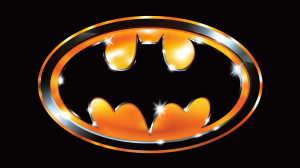Steamforged Games knocked it out of the park with Resident Evil 2, and now they’re back with Resident Evil 3: The Board Game, which has been a smash on Kickstarter. The campaign is nearly over, but if you were on the fence with backing the project, we’ve got something that might help you make that decision. ComicBook.com had the chance to talk to Steamforged Games‘ Sherwin Matthews, designer of Resident Evil 3: The Board Game, and as you will see from our conversation, the franchise couldn’t be in better hands. Matthews is a superfan of the franchise, and that knowledge coupled with what Steamforged learned from Resident Evil 2 has made Resident Evil 3 an even better Survival Horror experience and set the stage for one of the new game’s biggest innovations.
Videos by ComicBook.com
“When it came to looking at Resident Evil 3, most of us were very happy with the core engine, and how the characters moved around and the overall feel of it,” Matthews said. “What we wanted to really expand on was this idea of now you’re in a city, and we very early on had this awesome idea of ‘Well, wouldn’t it be really cool if you could explore the city in an open world?’ Wouldn’t it be amazing if you could backtrack around through the city?’ You go to a certain area, you find a gate you need to get through, but it’s locked by a padlock, so you have to go find the key. That forces you to go off in a different direction and explore that way. When you finally find the key, backtrack your way through, and then obviously unlock that gate, and then carry on forward.”
You’ll discover items and pathways along the way that you’ll need to hang onto in case you run into the thing that utilizes them, just like in the console versions of the game, though in many cases you don’t have to find these hidden things to progress through to the game’s conclusion, which adds to the game’s replayability.

“Not only is that a very core Resident Evil mechanic that they actually used in the original games, but it’s also something which we thought was really awesome,” Matthews said. “If we gave the players the ability just to explore themselves, and encounter the game in any way they wanted to, that immediately builds in loads of extra playability.”
You and up to four other players will play as the characters from the original game, including one player who will be playing as Nikolai. Those who have played the game know he ends up betraying the team, and that did lead to some conversations about including him as a playable character.
“So Nikolai presented us with an interesting challenge,” Matthews said. “We wanted to have four survivors who are really recognizable. In Resident Evil 2 for example, Sherry was going to be the fourth survivor we wanted to use, but unfortunately, because we didn’t want someone to be lumbered with, ‘Well, you have to play the character who can’t attack,’ we ended up having her switched out for Robert Kendo. Whilst I certainly wouldn’t take that decision back or change it, we did get some players saying, ‘Well, we don’t actually recognize this guy, who is this?’, and so, we knew we had to have it where they were instantly recognizable here. Unfortunately, that landed us at, well, fortunately, unfortunately, depending on which way you see it, Nikolai is definitely the character that fits into that fourth slot. Which then gave us questions to say, ‘Well, he’s the bad guy, right?’”
“So, really for that, you have to look at it from a perspective of when you first meet him, he’s not,” Matthews said. “He’s this slightly mysterious, slightly antagonistic character, that Jill meets and when she encounters him she agrees to help him escape the city as part of her escape. They’re all working together, and the actual part where he’s revealed to be a traitor, and working against him as a bad guy, doesn’t happen until later on in the game.”

While they did ultimately include him as a playable character, he went through a few versions that highlighted that villainous or traitorous aspect, but it always felt shoehorned in.
“We did go through several different ways of saying can we introduce some backstabbing in the character,” Matthews said. “We introduced the traits in the character, and we’d already looked at this for Resident Evil 2 with Ada Wong. We originally had an idea that maybe there was a mechanic where one of you is actually a secret agent for another company, and so we had objectives in bits and pieces. But, one of the things we landed on was that there was a whole bunch of moving parts in Resident Evil 2 already, and we really wanted the game to feel focused. There are whole games built around traitor mechanics. There are whole games that are built around this idea of… Battlestar Galactica is a really good example, it’s all built around who’s a Cylon, who isn’t a Cylon motivator. We didn’t want Resident Evil to feel like it was casually dropping that in.”
Now, you can’t have Resident Evil 3 without the Nemesis, and getting him just right did have its share of challenges.
“The biggest challenge with Nemesis was actually his broad range of attacks, and Nemesis was the first enemy we encountered this with,” Matthews said. “Nemesis obviously has several attacks. He’s going to run at you, charge at you, or hit you. He’s just going to do a big old swing if you’re nearby, or depending on what stage he’s in, he might do a tentacle lash. He has the rocket launcher as well.
“We had to come up with some interesting ideas of how we were going to implement those different types of attacks into this character,” Matthews said. “We didn’t suddenly want to have a Behavior Deck, because that would immediately, fundamentally require us to change all of the different rules of how bosses operate, and we’d have to create an exception, that this is how bosses work, but not Nemesis, who works this way. That was very, very clunky, and having a Behavior Deck as well as a Tension Deck immediately would then require players to look at that differently.”
They ultimately created a Special Attack System but worked it into the flow of everything else. The way the system works is each enemy that’s capable of doing multiple different types of attacks, which replaces the old special attacks from Resident Evil 2: The Board Game, have them listed on their cards, and they have them listed with a symbol next to their icon. When that enemy goes to do a reaction, you refer to the icon that’s printed on the current Tension Card that’s face up at the top of the pile, and that’s the attack they do. That immediately gave us a soft behavior deck for that, for how our enemies were going to operate, that gave them this intuitive and varied offensive power, but at the same time, wasn’t something that required players to have another deck, didn’t require something that they had to look at, and plan around, because often this is a deck, remember, that changes every single turn. The most reaction time a player has is seeing a card just before their turn’s about to happen. They go, ‘Okay right, I’ve got a turn to try and react to what this thing is going to do.’ Sometimes you just don’t have those options, so that immediately gave us the width for what we needed.”

Every time you encounter Nemesis doesn’t need to end up in a battle, but running from Nemesis will raise the city’s level of danger, making enemies tougher throughout the city, so you’ll need to weight the pros and cons of both.
“When you encounter Nemesis there are other queries where it’s stuff like, ‘Well, we could avoid this, but that makes this city more dangerous, do we want to do that?’ Because, ‘Okay, we don’t fight Nemesis, but everything else is going to become more difficult.’ So, there’s lot of decision points, lots of linear paths going on under the hood, and what is very nice about them is that not a lot of them require player agency to… there’s not a lot of bookkeeping to do,” Matthews said.
Now, if you were hoping for a mode where you could take control of Nemesis, unfortunately, that isn’t in the cards. That said, Matthews did reveal that early concepts of Resident Evil 2: The Board Game did have a DM involved. In fact, you could still have one if you really wanted to.
“We haven’t got a mode where Nemesis is playable, I’m afraid to say,” Matthews said. “It’s interesting because Resident Evil 2: The Board Game started off as a game with a DM very, very, very early on in its development, and then we wanted to make that the Tension Deck, and the encounter table, and all the bits and pieces. Having done more than my share of demos at different shows over the course of the last few years, I’m happy to say that you absolutely can, if you want to, as a DM, actually sit down to the game, and write your friends through it, although that’s not covered by the rules.”
“It all requires as much as any sort of D&D DM, for you just to be au fait with the rules, and you can happily steer the zombies, and move everything around, and actually just make the whole thing yourself, versus letting the AI doing it. So, to a certain extent, you can control Nemesis if you want to, but there isn’t an official game mode that we’ve made, where you could play as Nemesis and try to kill the survivors, I’m afraid not.”
So, who else is breaking out Resident Evil 2 to DM a game? Yeah, we will be too, and if you’re convinced about Resident Evil 3 you can check out the Kickstarter right here.








